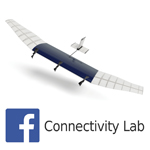
The internet is growing fast. But no matter how fast it grows, people in some places just can't be reached that easily. And Facebook thinks that these people in remote areas can be the "hidden" potential for the social media network as it progresses to aim for another billion users.
And to make that plan successful, on March 27th, 2014, Internet.org announced Facebook's Connectivity Lab to connect the entire world to the internet by using existing technology, or the invention of something entirely new. Facebook's broad move was a rumor when earlier the company was negotiating to purchase Titan Aerospace, a drone manufacturer. It's revealed that the team will include personnel from UK-based company, Ascenta, who has expertise in designing and building high-altitude long-endurance (HALE) aircraft, and previously worked on the Breitling Orbiter and prototypes of the Zephyr, one of the longest-flying solar powered unmanned drone.
And with Connectivity Lab, the component to 2013's Internet.org global partnership, Facebook CEO, Mark Zuckerberg just turned this rumor into reality, acknowledging Facebook's interest in high-altitude, long-endurance, solar powered drones that would stay up for months.
In 2013, Facebook and other tech companies launched Internet.org, a global partnership to make the internet available to the two-thirds of the world's population that doesn't have it. These tech companies believe that connecting the world is one of the greatest challenges of the current generation, and "everyone deserves access to knowledge, tools and opportunities that come from being connected".
The project that begun by the same engineering talent behind Facebook's infrastructure team and the Open Compute Project, Connectivity Lab consists of a team of people, including experts from NASA's Jet Propulsion Laboratory, Ames Research Center, and the National Optical Astronomy Observatory, which are working on new aerospace and communications technologies with the aim to improve and expand the global internet access.
According to Zuckerberg’s post, the Connectivity Lab team would experiment with multiple technologies. Low-Earth orbit geosynchronous satellites, for example, would provide access in lower density areas, while solar-powered drones would do the job in more suburban locales. The post also include a notice that Facebook was hiring team members and noted that open positions had been posted on the Facebook Careers page.
The drones would be designed to fly for months at a time at an altitude of 65,000 feet - far above commercial airspace - to reduce the risk of interference from wind and weather. The Verge said that the technology isn't actually new: "the technology already exists to achieve almost infinite mileage with solar drones. Solar Impulse, for example, flew almost 1,000 miles on a single trip using solar panels to charge up during the day and battery power at night."
The company's plan also calls for satellites to beam the internet to "user terminals". This in fact made Connectivity Lab's satellite system sounds a lot like Google's Project Loon, one of the search giant's "moonshots" that has similar primary goal: providing internet access to those living in remote areas.
A former MIT scientist and Facebook employee Yael Maguire explained that the drones will employ a "new type of plane architecture that flies at 20,000 meters," which will enable them to be unaffected by commercial airlines, wind and the weather. Maguire says they will be capable of remaining "in the air for months at a time."
For rural areas with low population densities, Facebook’s Connectivity Lab plans to employ satellite systems in a low-Earth orbit. The satellites will then be "constantly moving … [which] necessitates a steady stream" of internet signal and a user terminal for people on the ground to receive the satellite broadcast.
All systems would rely on FSO (Free-Space Optical) communication, which uses light to transmit data through space using invisible, infrared laser beams. FSO is a technology that allows an increased internet speed connections provided by satellites and drones.
Maguire says there are a "fabulous set of problems" to overcome to make the satellites work, which the Connectivity Lab plans to tackle with lasers. The problem, as he describes it in a YouTube video, involves how broadcast networks are currently bound to satellite towers that require a terrestrial connection to the internet.
"Lasers can offer a wireless connection to the Connectivity Lab's satellite system, delivering high speeds on par with fiber optics," Maguire said.
"Our goal with Internet.org is to make affordable access to basic internet services available to every person in the world," Zuckerberg said in his post.
"The Connectivity Labs were established to support the initiative of Internet.org," a spokersperson said. "The more companies, the more organizations working towards the goal of connecting people around the world, the better."
Facebook goes head-to-head with Google in a high-altitude race to connect the world's most remote locations to the internet. Whereas Google’s Project Loon will use a network of hot-air balloons to connect the internet to rural areas, Facebook’s Connectivity Lab's solar-powered drones will connect highly populated, suburban areas to rural ones. Both solar-powered drones and hellium-balloon are two solutions to solve one big single problem that modern people have in common: no connectivity.